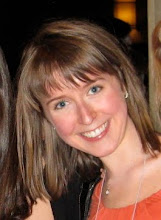 While the news of the Pakistani Times Square suspect still percolates in the media stratosphere, I thought I'd share a recent race-based study I conducted with a group of students in a mass media and public opinion course here at UW. We will present these results and the implications of our research this coming Thursday.
While the news of the Pakistani Times Square suspect still percolates in the media stratosphere, I thought I'd share a recent race-based study I conducted with a group of students in a mass media and public opinion course here at UW. We will present these results and the implications of our research this coming Thursday.We investigated perceptions of hiring equality between blacks and whites over time, and portrayals of blacks in professional positions on primetime TV for the same time period. "Professional positions" were those that required a high level of intellect or academic/managerial training (doctors, lawyers, nurses, detectives). Athletes and talent judges (Randy Jackson, e.g.) were not considered professional, as their jobs are not intellectually-based or a result of academic or managerial training.
We hypothesized that:
1. Public perception of hiring equality among blacks and whites would increase over time.
2. The prevalence of blacks in professional positions on primetime TV would increase over time.
Our public opinion data came from Gallup polls. From 1963 to 2009, Gallup collected responses to the following question:
"In general, do you think that blacks have as good a chance as white people in your community to get any kind of job for which they are qualified, or don’t you think they have as good a chance?"
Graphing the responses revealed a trend toward greater public perception of hiring equality over time (see top graph above).
For the media analysis portion of our project, we coded for the presence and number of black professionals in each of the top 10 shows (in terms of viewership) for each year from 1963-2009. We used the Internet Movie Database for character lists and descriptions. After testing intercoder reliability (98%), each of the five researchers coded 94 shows.
After combining our coding results, we found an increase in both the number of shows with black professionals and the number of black professionals in each show. For simplicity's sake, the graph above shows only the increase in the number of shows with black professionals, and not the increase in the number of black professionals per show.
The above graphs compare the public opinion and media trends. These graphs indicate that as perceptions of hiring equality among blacks and whites increased, so too did the prevalence of blacks in professional positions on TV. These results support both our public opinion and media hypotheses.
Of course, every study has its limits. We only looked at the top 10 shows for each year, and there may have been other influential shows that did not make that list (Roots, e.g.). Furthermore, our data collection began with the Civil Rights years, and that is undoubtedly an influential factor to be considered in any subsequent analysis of race politics over this time period.
It is important to note that we cannot claim causation from our results. But even so, the correlation between public opinion and media content leads us to ask: What does this mean?
These results are hopeful, indicating that we have made progress both in society and on screen. These results speak well of Equal Opportunity Employers and their commitment to their claims, and they speak volumes about the progress minorities--blacks in particular--have made in the entertainment industry.
We should also take these results with a grain of salt. It would be wrong to look at these trends and claim, "See! We're equal!" Hardly. Workplace discrimination is not only yesterday's problem, and whites, professional or otherwise, still outnumber blacks on screen.
In sum: Progress? Yes. Success? Not so fast.

No comments:
Post a Comment